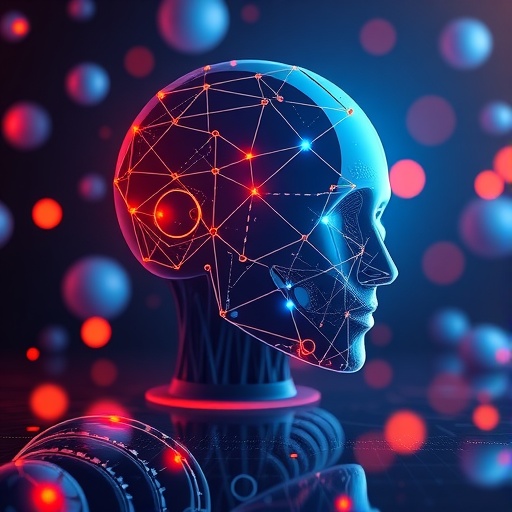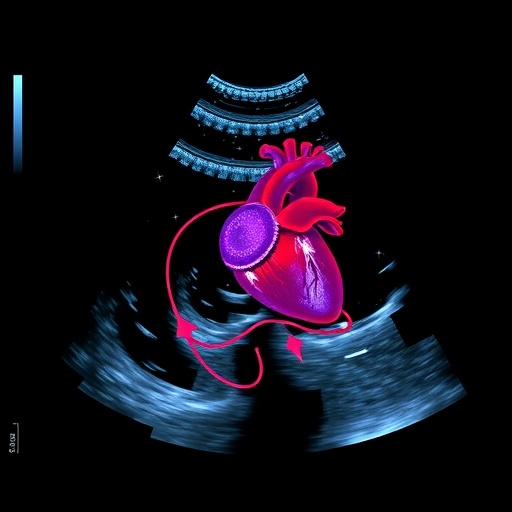In recent years, the medical community has delved deeper into the intricacies of sedation management, particularly during complex interventions such as venovenous extracorporeal membrane oxygenation (vv-ECMO). As life-sustaining technology continues to evolve, understanding the sedation practices during such procedures is crucial for optimizing patient outcomes. The narrative review led by Szentgyorgyi and colleagues sheds light on the key challenges that practitioners face, as well as the potential benefits of processed electroencephalography (EEG) in administering sedation.
One of the pressing challenges highlighted in the review is monitoring. The standard parameters we have relied on for sedation monitoring are often insufficient during vv-ECMO procedures. Traditional methods, such as observing a patient’s vital signs or using sedation scales designed for non-ECMO conditions, may fail to capture the unique physiological responses of patients under such intense medical interventions. As a result, some healthcare providers are turning to processed EEG to provide a more nuanced view of a patient’s sedation levels.
Processed EEG involves the continuous monitoring of electrical activity in the brain, offering real-time insights into a patient’s sedative depth. By interpreting the EEG data, clinicians can glean information about the brain’s responsiveness, assisting in making informed decisions regarding sedation administration. This innovative approach represents a potential game-changer in the management of sedation during vv-ECMO, particularly for patients who may respond unpredictably to conventional sedatives or require adjustments during prolonged therapy.
Moreover, the review elucidates the potential for processed EEG to minimize the risks associated with prolonged sedation. Over-sedation can lead to a myriad of complications, including prolonged mechanical ventilation, increased hospital stays, and higher healthcare costs. By utilizing processed EEG, the aim is to tailor sedation practices specifically to individual patient needs, promoting not just safety but also faster recoveries. The review underscores the importance of individualized sedation protocols, emphasizing that a one-size-fits-all approach may not be applicable within the diverse patient populations undergoing vv-ECMO.
Another aspect that the review touches upon is the psychological implications of sedation during vv-ECMO. While pharmacological sedation is vital, it’s equally critical to underpin this with non-pharmacological interventions to address patient anxiety. Psychological support, along with sedation, can significantly enhance the overall patient experience. Understanding and addressing the psychological dimensions of sedation can, in turn, improve compliance during procedures and foster better outcomes.
A pivotal theme in the review is the integration of multidisciplinary approaches. Involvement of a diverse healthcare team, including intensivists, anesthesiologists, and nursing staff, can facilitate the assessment of sedation practices and highlight areas in need of improvement. By forging collaborative pathways, healthcare professionals can share insights and strategies to enhance sedation management during vv-ECMO. This collective expertise opens the door to a more comprehensive approach, ensuring that patients receive the best possible care throughout their treatment journey.
In addition to practical considerations, the review also addresses the need for further training and education regarding sedation practices in vv-ECMO. It highlights the importance of equipping healthcare providers with the necessary knowledge and skills to navigate the nuances of sedation in this unique clinical context. Empowering practitioners with advanced training can lead to better adherence to sedation protocols, ultimately translating into improved patient outcomes.
The potential for processed EEG-based solutions to revolutionize sedation management extends beyond vv-ECMO. As the technology matures, its applications could potentially reach other critical care settings where sedation management remains a significant concern. By laying the groundwork in high-stakes environments like vv-ECMO, there is a critical opportunity to catalyze broader changes across the entire spectrum of intensive care.
This narrative review serves as a clarion call for further research into the intricacies and application of processed EEG in sedation management. By exploring the benefits and challenges associated with EEG monitoring, the medical community can better understand how to implement these strategies effectively. As more data accumulates, it may pave the way for developing standardized guidelines that can enhance sedation practices across various healthcare settings.
The discourse surrounding sedation management is complex and often nuanced, particularly in such critical interventions as vv-ECMO. Nonetheless, this review promotes hope for the future, showcasing a vibrant area of research that could redefine patient care. By embracing new technologies and methodologies like processed EEG, the prospect of improved patient experiences during critical care is not just a distant possibility—it is rapidly becoming a reality.
As the ongoing dialogue within the medical community continues, one thing remains certain: the intersection of innovation in sedation management and vv-ECMO will undoubtedly usher in transformative changes in critical care practices.
The reflection on the ethical dimensions surrounding sedative use, the quest for patient autonomy, and the role of technology as a facilitator in medicine are also vital discussions that will shape the future landscape of healthcare. This conversation is just beginning, and with it comes the promise of continued advancements in patient care and sedation management.
Subject of Research: Sedation management during venovenous extracorporeal membrane oxygenation (vv-ECMO).
Article Title: Sedation management and processed EEG-based solutions during venovenous extracorporeal membrane oxygenation: a narrative review of key challenges and potential benefits.
Article References:
Szentgyorgyi, L., Howitt, S.H., Iles-Smith, H. et al. Sedation management and processed EEG-based solutions during venovenous extracorporeal membrane oxygenation: a narrative review of key challenges and potential benefits.
J Artif Organs 28, 293–307 (2025). https://doi.org/10.1007/s10047-025-01494-y
Image Credits: AI Generated
DOI: https://doi.org/10.1007/s10047-025-01494-y
Keywords: Sedation management, venovenous extracorporeal membrane oxygenation, processed EEG, patient outcomes, critical care.
Tags: advanced life support sedation practicesbenefits of processed EEG for sedationchallenges of sedation in vv-ECMOcomplexities of ECMO sedation managementcritical care sedation monitoring techniquesmonitoring sedation in critical careoptimizing patient outcomes in ECMOpsychological aspects of sedation during ECMOsedation management during ECMOsedation safety in extracorporeal membrane oxygenationsedation side effects in ECMO patientsvenovenous ECMO sedation protocols





